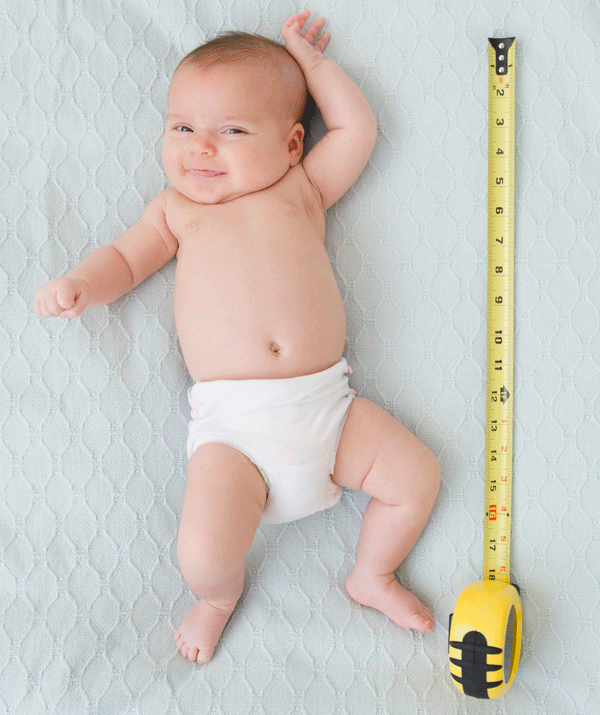Everyone says it and it’s true: your baby does not stay a little baby for long. Before you know it, that tiny newborn you brought home from hospital will be a big, boisterous toddler.
In your baby’s first year, it is possible that you will see about five growth spurts, occurring around six weeks, eight weeks, three months, six months and nine months.
As your child gets older, the frequency of growth spurts slows down to a few months, or longer, apart.
A growth spurt means there is a rapid increase in length or height and weight.
According to growth researcher and director at the Emory University’s Centre for the Study of Human Health, Dr Michelle Lampi, your youngster can grow as much as nine millimeter in length in just 24 hours.
With such a significant change happening, you little one might be out of sorts during a growth spurt.
One of the first signs is suddenly having a massive appetite so she might be feeding more frequently. While this may feel really draining if you’re breastfeeding, it’s only a short-term event, lasting for a day or two.
Another sign is suddenly waking repeatedly at night or refusing to nap during the day. She’ll make up for the lost sleep.
When your child is having a growth spurt, give her regular massages. This can soothe her, plus rubbing her arms and legs will help if she has growing pains.

Did you know your bub can grown as much as nine mm in just 24 hours!?
(Getty Images)How is a baby measured?
A baby’s length is measured from the top of their head to the bottom of one of their heels. It’s the same as their height, but height is measured standing up, whereas length is measured while your baby is lying down.
The average length at birth for a full-term baby is about 50 cm.
Watch this incredible time lapse of what your baby sees in their first year. Post continues after video…
Babies under two-years-old are usually weighed on a special infant scale – newborns will lie down on the scale. It’s more accurate to weigh babies with no clothes on until they are 12 months. After they turn two, they can be measured standing up in light clothes.
Your babies head is measured with a tape where it has the largest circumference – just above the eyebrows and ears, and around the back of the head.
Measuring head circumference is important as it reflects the growth of her brain. The bones in your baby’s skull are still growing together, and the skull is growing faster during the first four months than at any other time.
The average newborn’s head circumference measures about 35 cm, growing to about 38 cm by one month. Because boys tend to be slightly larger than girls, their heads are larger, though the average difference is less than one centimetre.

Is your little one experiencing a growth spurt? One of the first signs can be an increased appetite.
(Getty Images)What are growth charts (percentile charts)?
Growth charts are graphs that show changes in your child’s length or height, weight and head circumference. They help to show if your child is growing in a healthy way.
According to Raising Children, most children’s lengths, weights and heads are somewhere between the top and bottom curves on the charts. Half of all children grow at a rate above the middle of the typical range, and half grow at a rate below this range.
Percentiles divide up the range of typical growth on growth charts. If a baby is on the 5th percentile for weight, it means that he weighs less than 95% of other babies of the same age. A baby on the 90th weight percentile weighs more than 90% of other babies. But both babies are within the typical range. Boys and girls follow different growth charts.
All Australian states and territories use World Health Organization (WHO) growth charts to measure the growth of children aged 0-2 years. These charts are described as ‘optimal’ rather than ‘average’ growth and are based on the growth of healthy, exclusively breastfed babies measured over time in six countries.
Parents can often worry their baby isn’t growing fast enough or is too big. While it’s important to measure a child’s growth to check if they are healthy and developing properly, it’s not the only way to tell.
Healthy kids come in a wide range of shapes and sizes, and they don’t grow at a steady rate. Talk to your health professional if you have any concerns.



